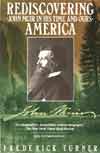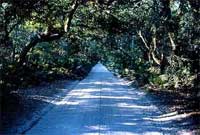
|
The Worm Forgives the PloughFriday, 11th April 2003, West Yorkshire |
![]()
![]()
![]()
![]() Rocks | History |
Workshop |
Links | Home
Page
Rocks | History |
Workshop |
Links | Home
Page
![]()
 Yesterday
I was watching a blackbird dealing with a worm. Holding
it in its beak, it rubbed it back and forth across a patch of dry soil
at the corner of the front lawn, dropping it and retrieving it occasionally.
At first I thought that it must have a slug and that it was wiping away
the slime but when it flew off it was obvious that it had an earthworm
in its bill.
Yesterday
I was watching a blackbird dealing with a worm. Holding
it in its beak, it rubbed it back and forth across a patch of dry soil
at the corner of the front lawn, dropping it and retrieving it occasionally.
At first I thought that it must have a slug and that it was wiping away
the slime but when it flew off it was obvious that it had an earthworm
in its bill.
I've been catching up on some programmes I'd recorded on video and I'm interested to learn in a documentary on the life of Buddha that his first insights into the nature of life and suffering came from watching a plough cutting through the soil. It seems that he felt some compassion for the earthworms that were cut by the plough.
Then he saw a bird feeding on the worms and realised that without the suffering of the worms the bird would not be fed.
'The cut worm forgives the plough'
William Blake, Proverbs of Hell
A Thousand Mile Journey
 I
also caught up on a Robert Perkins 1998 documentary Looking
for John Muir, following Muir's inspirational
thousand mile walk through the southern states of America just two years
after the end of the Civil War. Muir (1838-1914) had been, amongst
other things, a practically-minded inventor until an accident with a machine
temporarily blinded him. He vowed that if he recovered he would turn to
the study of nature.
I
also caught up on a Robert Perkins 1998 documentary Looking
for John Muir, following Muir's inspirational
thousand mile walk through the southern states of America just two years
after the end of the Civil War. Muir (1838-1914) had been, amongst
other things, a practically-minded inventor until an accident with a machine
temporarily blinded him. He vowed that if he recovered he would turn to
the study of nature.
I have to say that I found the account of Muir's revelatory journey heavy-going in Frederick Turner's biography of Muir Rediscovering America. It goes into so much detail about which creek Muir followed, which river he crossed and in which backwoods town he spent the night. As I don't know the area at all this didn't mean much to me and I kept putting the book down and coming back to it weeks later and thinking 'he's still on his 1,000 mile journey!' Muir kept a journal which apparently he illustrated with occasional sketches and I would have welcomed some of these to break up the text.
'A tower of nine storeys begins with a heap of earth.
The journey of a thousand li starts from where one stands'
Tao-te Ching ch. 56
The Misguided Traveller
By contrast Robert Perkins' Looking for John Muir was described as 'a misguided travelogue' by the L.A.Times and a 'dismal documentary' by the Sierra Club. From this you can guess that it's a whole lot more fun than the exhaustively researched chapter in Rediscovering America (which I'd still recommend, despite that comment).
Perkins himself, with his mix of passion and practicality, is probably as close as we can get to a present-day Muir. Something of a loner in his appreciation of solitude he's like Muir in his disarming candour and his depth of knowledge about wilderness. Some of his insights into Muir's message may appear off-the-cuff but to me they're profound. I was impressed by the way Perkins found more wisdom and humility in some of the 'ordinary' people he encountered than he did in a couple of 'experts' (in religion and ecology) he interviewed who came out with ideas that are jaw-droppingly contrary to Muir's philosophy.
Signs
 I
particularly enjoyed Perkins' conversation with his old friend
Mrs Sandy West of Ossabaw Island, a wilderness
eco-system just 20 minutes from Savannah, where Muir's walk ended.
I
particularly enjoyed Perkins' conversation with his old friend
Mrs Sandy West of Ossabaw Island, a wilderness
eco-system just 20 minutes from Savannah, where Muir's walk ended.
They're admiring an ancient tree and Perkins comments: 'You were saying something about people wanting to put up signs here.'
'I'm passionate about Ossabaw being left alone,' says West, 'and everyone wants to meddle. Human beings have to change things and they meddle and they wreck stuff. I have never had a sign except to show people where they have to go.'
She recalls a visit she'd had from a group of 8 or 9 year old handicapped children who'd been taken on a tour of the island. After their trip they wrote to her:
Dear Mrs West,
We love you better than anybody in the world because you know how to leave things alone.
She recalls that they said to their teachers: 'We went to the egret rookery and there were no neon lights: we saw it the way it was supposed to be.'
Paradise Improved?
In my own work as a wildlife illustrator, I've always been involved in providing interpretations of the natural world. If I'm visiting a nature reserve I'll invariably pause to read, or at least glance at, such signs myself but increasingly I question whether a wilderness, or even a semi-natural country park, is really improved by a sign telling us about it. I guess that sometimes we've got to accept that we can't improve on paradise.
At the end of his journey Perkins makes a plea for preserving nature for its own sake, quoting John Muir:
Nature's object in making animals and plants might possibly be for the happiness of all and not the creation of all for the happiness of one.
Related Links
Sherpa Guide to Ossabaw Island
John Muir Exhibit at the Sierra Club website.
Robert Perkins: books, films and lecture tours (any chance that you'll start a web log, Rob?).
The nearest that Perkins came to West Yorkshire in his canoe travels on film was when he attempted to canoe along the River Ribble and he was told off by the water baliff - he had to find the nearest road an hitch a ride for himself and his canoe!
I especially liked his story of an encounter with a group of youths on a canal towpath in the North Midlands who threatened him saying; 'Give us your camera! - There are more of us so we can take it off you.'
'You can take it off me,' replied Perkins calmly, 'but at least one of you will be very seriously injured.'
They turned away at that. Perkins has the essential survival
skills to see him through a canoe journey in the wilder parts of West
Yorkshire! By the way, Muir told a similar story of a cool head getting
him out of trouble when he met a band bushwhackers, so little has changed.
![]()
![]() Next page | Previous
page | This day in 2000
| This month | Nature
Diary | Home
Page
Next page | Previous
page | This day in 2000
| This month | Nature
Diary | Home
Page
![]()